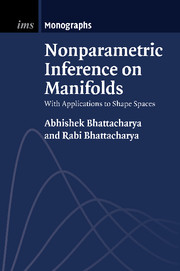Refine search
Actions for selected content:
1206 results in Computer Graphics, Image Processing and Robotics
2 - Second-generation sparse modeling: structured and collaborative signal analysis
-
-
- Book:
- Compressed Sensing
- Published online:
- 05 November 2012
- Print publication:
- 17 May 2012, pp 65-87
-
- Chapter
- Export citation
Frontmatter
-
- Book:
- Compressed Sensing
- Published online:
- 05 November 2012
- Print publication:
- 17 May 2012, pp i-iv
-
- Chapter
- Export citation
11 - Data separation by sparse representations
-
-
- Book:
- Compressed Sensing
- Published online:
- 05 November 2012
- Print publication:
- 17 May 2012, pp 485-514
-
- Chapter
- Export citation
List of contributors
-
- Book:
- Compressed Sensing
- Published online:
- 05 November 2012
- Print publication:
- 17 May 2012, pp vii-viii
-
- Chapter
- Export citation
4 - Sampling at the rate of innovation: theory and applications
-
-
- Book:
- Compressed Sensing
- Published online:
- 05 November 2012
- Print publication:
- 17 May 2012, pp 148-209
-
- Chapter
- Export citation
1 - Introduction to compressed sensing
-
-
- Book:
- Compressed Sensing
- Published online:
- 05 November 2012
- Print publication:
- 17 May 2012, pp 1-64
-
- Chapter
- Export citation
8 - Greedy algorithms for compressed sensing
-
-
- Book:
- Compressed Sensing
- Published online:
- 05 November 2012
- Print publication:
- 17 May 2012, pp 348-393
-
- Chapter
- Export citation

Nonparametric Inference on Manifolds
- With Applications to Shape Spaces
-
- Published online:
- 05 May 2012
- Print publication:
- 05 April 2012
Perface
-
- Book:
- Nonparametric Inference on Manifolds
- Published online:
- 05 May 2012
- Print publication:
- 05 April 2012, pp xi-xiv
-
- Chapter
- Export citation
Commonly used notation
-
- Book:
- Nonparametric Inference on Manifolds
- Published online:
- 05 May 2012
- Print publication:
- 05 April 2012, pp ix-x
-
- Chapter
- Export citation
2 - Examples
-
- Book:
- Nonparametric Inference on Manifolds
- Published online:
- 05 May 2012
- Print publication:
- 05 April 2012, pp 8-20
-
- Chapter
- Export citation
Appendix D - Parametric models on Sd and ??k2
-
- Book:
- Nonparametric Inference on Manifolds
- Published online:
- 05 May 2012
- Print publication:
- 05 April 2012, pp 225-228
-
- Chapter
- Export citation
12 - Real projective spaces and projective shape spaces
-
- Book:
- Nonparametric Inference on Manifolds
- Published online:
- 05 May 2012
- Print publication:
- 05 April 2012, pp 147-155
-
- Chapter
- Export citation
13 - Nonparametric Bayes inference on manifolds
-
- Book:
- Nonparametric Inference on Manifolds
- Published online:
- 05 May 2012
- Print publication:
- 05 April 2012, pp 156-181
-
- Chapter
- Export citation
9 - Reflection similarity shape spaces R??km
-
- Book:
- Nonparametric Inference on Manifolds
- Published online:
- 05 May 2012
- Print publication:
- 05 April 2012, pp 110-129
-
- Chapter
- Export citation
7 - Kendall's similarity shape spaces ??km
-
- Book:
- Nonparametric Inference on Manifolds
- Published online:
- 05 May 2012
- Print publication:
- 05 April 2012, pp 82-86
-
- Chapter
- Export citation
6 - Landmark-based shape spaces
-
- Book:
- Nonparametric Inference on Manifolds
- Published online:
- 05 May 2012
- Print publication:
- 05 April 2012, pp 77-81
-
- Chapter
- Export citation
11 - Affine shape spaces A??km
-
- Book:
- Nonparametric Inference on Manifolds
- Published online:
- 05 May 2012
- Print publication:
- 05 April 2012, pp 135-146
-
- Chapter
- Export citation
5 - Intrinsic analysis on manifolds
-
- Book:
- Nonparametric Inference on Manifolds
- Published online:
- 05 May 2012
- Print publication:
- 05 April 2012, pp 57-76
-
- Chapter
- Export citation
References
-
- Book:
- Nonparametric Inference on Manifolds
- Published online:
- 05 May 2012
- Print publication:
- 05 April 2012, pp 229-234
-
- Chapter
- Export citation
